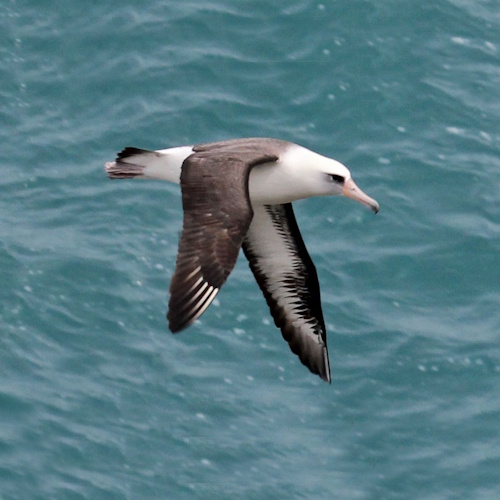Birds live long, energetic lives, often with blood sugar levels that would alarm a doctor. They dart through skies, raise large broods, and outlive many mammals of similar size. But how do they manage this? Isn’t high blood glucose typically linked with health decline?
That question sparked a detailed study of 88 bird species from across the avian world. The researchers measured blood glucose and albumin glycation—a marker of protein damage caused by sugar. They then compared those values to life traits like body mass, diet, lifespan, and clutch size.
The results were both expected and surprising. Glucose did rise with metabolic demand, but birds didn’t always pay a price. Instead, the data pointed to unusual biological adaptations. In fact, some birds seemed able to resist the damage usually caused by elevated blood sugar.
Glucose and Glycation: A Dangerous Pair
In humans and many animals, high glucose triggers a harmful process called glycation. This chemical reaction links sugars to proteins, forming sticky molecules known as AGEs (Advanced Glycation End-products). AGEs cause damage by stiffening tissues and igniting inflammation. Over time, they contribute to ageing and disease.
In theory, birds should suffer worse from this, since they carry almost double the blood glucose levels of mammals. But they don’t. Some birds live decades with no signs of diabetic complications. The study explored how that could be.
It turns out that glycation does increase with glucose, but not in a straight line. The researchers found a logarithmic curve. Glycation rose more slowly as glucose climbed. That meant birds with the highest glucose had proportionally less glycation than expected. They weren’t just living with high sugar—they were handling it gracefully.
Small Birds, High Glucose, Low Trouble
Among the species studied, smaller birds like hummingbirds and swifts had extremely high blood sugar. That matches their intense energy needs. Still, their proteins did not show the level of glycation damage one would expect. Larger birds, like flamingos or cormorants, had lower glucose and even lower glycation levels.
One standout case was the flamingo. It had only 18 glycatable lysine residues in its albumin, compared to up to 44 in zebra finches. This structural difference may protect proteins from sugar damage. But protein structure alone didn’t explain all the variation.
Even within a single bird order, glycation resistance differed. Procellariiformes showed this clearly. Some species like snow petrels had low glycation despite long lives and high glucose, while others like Calonectris diomedea showed much higher levels. This suggests that resistance can work in different ways. Some birds avoid glycation. Others withstand its effects.
Glycemia and Body Size Tell a Clearer Story
Body mass played a strong role in predicting glucose levels. Heavier birds tended to have lower glucose. That fits prior findings in both birds and mammals. Small birds, with higher metabolic rates and intense activity like flight, needed higher blood sugar.
However, lifespan showed a more complex relationship. Birds with longer maximum lifespans had higher glucose—but only up to a point. Then the increase leveled off. This plateau could hint at an evolutionary balance. Beyond a certain point, birds may evolve new systems to manage sugar without adding risk.
Clutch mass and developmental time, often linked to metabolic strategy, did not show a clear connection to glucose or glycation. This weakens some expectations of the pace of life syndrome (POLS), which predicts that slow-living animals should have lower metabolic stress.
Carnivores Show Unexpected Patterns
One of the study’s surprises came from diet. Terrestrial carnivores had higher albumin glycation, even though their glucose levels weren’t higher. This implies that their proteins face more sugar-related damage, perhaps because they turn over more slowly or face greater oxidative stress.
That same pattern didn’t appear in aquatic carnivores. These birds may benefit from marine diets rich in omega-3 fatty acids, which are known to improve insulin sensitivity and lower inflammation. Terrestrial diets may lack those helpful fats or contain fewer antioxidants like carotenoids and vitamins A and E.
This difference hints at subtle but meaningful distinctions in how diet affects glycation, especially over evolutionary time. The researchers point to this as a promising direction for future work.
Do Captive Birds Skew the Results?
Because some samples came from zoo populations and others from the wild, researchers asked whether captivity might affect the findings. Captive birds tend to move less and eat more regularly, which could raise glucose. But even with these differences, patterns across diet groups and life traits stayed consistent.
This consistency strengthens the study’s conclusions. While a stricter sampling approach might reduce noise, the overall trends seem reliable. Birds, regardless of setting, show remarkable control over glycation.
Glycation Resistance Appears Widespread but Uneven
Not all birds manage glycation the same way. Some limit the reaction itself, perhaps through protein design or protective molecules. Others tolerate the resulting damage without apparent harm. This resistance might stem from better antioxidant systems, faster protein turnover, or other unknown factors.
Interestingly, birds appear to lack the RAGE receptor found in mammals. This receptor triggers inflammation when AGEs bind to it. Without it, birds may avoid the cascade of damage seen in diabetic humans. Still, recent work suggests birds may have similar molecules. This opens up new questions about how inflammation works in birds.
The point is clear: glycation resistance is not one mechanism but likely a suite of adaptations shaped by ecological needs, body design, and evolutionary pressures.
Why These Findings Matter Beyond Birds
Birds challenge our view of high glucose as inherently harmful. Their ability to live long, active lives with elevated glycaemia may inspire new thinking in ageing and metabolic health. If we can identify how they avoid sugar-related damage, those insights could inform medicine and nutrition.
This research also expands our understanding of metabolic diversity. It shows how traits evolve together—diet, physiology, reproduction, and longevity are not independent. They form a system, and birds are a great example of how that system can differ across species.
More Questions Than Answers—for Now
The study’s sample included 88 species, but some groups remain underexplored. Adding more data from herbivores, frugivores, and underrepresented orders could reveal deeper patterns. Likewise, comparing birds with different lifestyles—migratory versus sedentary, or aerial versus ground-dwelling—may help clarify which adaptations matter most.
Birds such as Passeriformes, with high glucose but relatively low glycation, stand out as key models. Others like Anseriformes, with low reproductive demands and low glucose, could show the opposite end of the spectrum. Together, they offer a full view of how evolution handles sugar in the bloodstream.
Closing Thoughts
Birds bend the rules. They carry high sugar without the consequences we expect. They age slowly, fly far, and survive long, all while resisting a process that damages humans. Their biology invites admiration—and curiosity.
This study doesn’t close the case. But it opens a path. By understanding how birds keep sugar from becoming poison, we may learn how to age with energy, not decay. That lesson may not just belong to birds. It might belong to us too.
The study is published on the eLife website. It was led by researchers from the University of Strasbourg.







